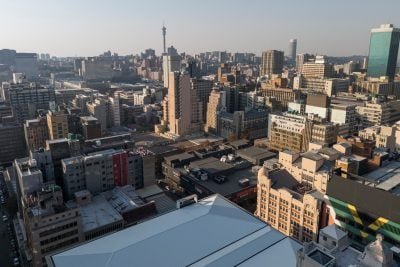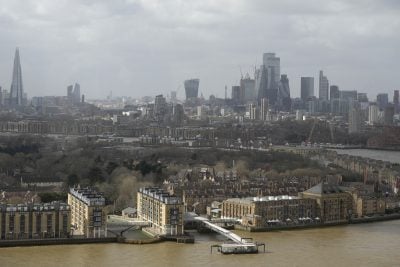The idyllic white sands of Mont Choisy are some of the most well-known in Mauritius, a country not short of scenic coastline.
Beaches like Mont Choisy draw tourists to the African island, which lies in the Indian Ocean and is enveloped by a warm, turquoise lagoon, making it a popular destination for diving and snorkelling.
But Mont Choisy is severely threatened by climate change. Projections indicate that one of Mauritius’s most beautiful beaches will be underwater within 10 to 15 years, according to Amanda Serumaga, the UN Development Programme’s (UNDP) resident representative for Mauritius & Seychelles.
“Now, why does that matter? Not only because it’s a beautiful place, but obviously because it’s a huge income earner – Mauritius is about tourism to a certain extent,” Serumaga tells African Business.
To protect the beach, in June 2019 the UNDP and Mauritius’s Environment Ministry made an artificial coral reef to help reprofile the beach escarpment eroded by higher water levels and damaged by warmer temperatures.
The reef attenuated the waves, meaning that they could hit the beach in a way that caused less erosion, and allowed the restoration of vegetation along the coast.
Climate change also causes the heating of the ocean that kills coral which in turn impacts the marine ecosystem, impacting the food security of local communities.
Climate change is just one of the factors troubling the island’s tourism industry. In 2020, the island adopted a “zero Covid” policy and a strict lockdown, meaning all the resorts were empty of tourists.
Annual tourist visitors fell from 1.4 million a year – more than the island’s population of 1.2 million – to close to zero.
In 2019, before the Covid-19 pandemic, 19.5% of the island’s GDP came from tourism, which accounted for more than 100,000 jobs. That plunged to 8.3% in 2020 and 4.6% in 2021, according to data from Statista.
To protect workers and businesses, the government stepped in with a huge stimulus, around 28% of the country’s GDP, according to an IMF estimate.
This included the state spending 18bn rupees (around $400m) supporting wages for employed and self-employed Mauritians, especially in hard-hit industries like tourism.
With help from the central bank, the government established the Mauritius Investment Corporation to lend money to some of the biggest companies in struggling sectors, but in return, businesses were forbidden to lay off staff.
The global economic environment is also weighing on prospects – annual inflation in 2022 was expected to rise to 11.4%, says the IMF, due to surging commodity prices, past depreciation of the rupee, and recovering domestic demand.
Reducing the debt burden
Ken Poonoosamy, chief executive officer of Mauritius’s Economic Development Board, a government agency that is tasked with promoting and facilitating investment in the island, says the government needs to ensure that the economy rebounds quickly enough to make sure public debt doesn’t get too high. In fiscal year 2022, public sector debt was 88.1% of GDP after reaching 99.2% in 2020.
“I know that the Minister of Finance and the technical teams are working towards reducing the debt, so there are strategies of reducing public expenditure, but at the same time, we have to invest in the capacity in the infrastructure landscape to ensure that Mauritius continues to remain competitive and attractive to the investor community and businesses,” Poonoosamy says.
He believes that Mauritius’s tourism sector is close to recovering from pre-pandemic levels.
“The numbers are not yet there, because, in 2019, we had roughly 1.4 million tourists,” he says. “So this year I think the target is around 1 million tourists, so we’re still not there.”
But he noted that tourists going to Mauritius now tend to spend more time in the country than before – 14 days on average compared to nine before the pandemic.
Despite the potential for “robust growth” – the IMF projects growth of 6.1% in 2022 and 5.4% in 2023, followed by a convergence to its pre-pandemic trend growth of 3% to 3.5% in the medium term – Poonoosamy said that there are some improvements the country could make in terms of the connectivity and capacity of its tourism industry.
Many other sectors on the island are growing, including agriculture, manufacturing and ICT/BPO (business process outsourcing), he says.
Mauritius’s real estate sector is growing too, with affluent Europeans and South Africans buying properties on the island – which allows foreign nationals to make a minimum real estate investment of $375,000 and apply for residency.
“I feel we’ve managed to create niche segments where we have a competitive advantage, where investors look at the good returns on capital and where they find that the ecosystem is good for them to have an export market,” Poonoosamy says.
He refers to the manufacturing sector, noting how Mauritius started off making textiles and apparel in the mid-1900s and today has a strong jewellery export sector – around 90% of all jewellery produced on the island goes to foreign markets. Precision engineering and manufacturing of medical devices also bring in strong export earnings for Mauritius, he says.
“In the agro-industry, we’re looking at smart agriculture, smart farming, vertical farming, and bringing technology. In the financial services sector, there has continuously been an upgrading of innovative products that we want. And underlying all that, I think what matters is how do we bring innovation, technology and also look how we can move forward?”
“We must recognise, though, that one of the biggest challenges at the moment is talent retention and manpower. And I think we have a great story to tell, there’s so much that is going for us… we are continually opening up the country to foreign talent skills and know-how.”
The Economic Development Board has set up a digital industry academy to “respond to the needs of the industry in terms of growth potential, employability of people and ensuring that the right people have the skill sets to accompany the growth momentum”. In February, Mauritius announced that it was offering long-term visas for remote workers.
New markets
Seen by many foreign investors as a conduit between Africa and India, Mauritius’s traditional sources of foreign direct investment (FDI) include France and South Africa. Most of the country’s FDI comes from Europe, with investment from China down due to Covid-19 restrictions, but some also is coming from the Middle East, Poonasamy says.
“With the closure of borders from China, it’s not been that significant, but it will be restored once the borders are open. But I feel we are seeing quite some growth traction from emerging markets, including in Africa.”
The financial services sector remained largely stable through the pandemic, and in October 2021 the country exited from the Financial Action Task Force list of jurisdictions under increased monitoring – known as the “grey list” – after making improvements in deficiencies in its regimes to counter money laundering and terrorist financing.
It was removed from the analogous EU and UK lists soon after in an important boost for investment in the sector.
Trade also offers cause for optimism. Poonasamy is animated about the opportunities that the African Continental Free Trade Area (AfCFTA) can bring, and the country has already forged links as a member of the Southern African Development Community (SADC) and the Common Market for Eastern and Southern Africa (COMESA).
“South Africa is now one of our main markets. We’re exporting sugar to Kenya. We are exporting to a number of countries. With respect to the movement of capital, our enterprises are already investing in a number of places across East Africa.”
Challenges going forward
Mauritius’s blue economy – which includes coastal tourism, fishing, seafood processing and other maritime activities – amounts to more than 10.5% of the country’s GDP. That economy was severely impacted in July 2020, when a Japanese oil carrier ran aground on a coral reef off the southeast of the island, known for its biodiversity.
In the following weeks, the MV Wakashio ship haemorrhaged an estimated 1000 tonnes of oil into the ocean. It was an environmental disaster for Mauritius and the government declared a state of emergency.
More than 100,000 people – or one in every 12 people on the island – took to the streets to protest against the government of Prime Minister Pravind Jugnauth, which they accused of being slow to act on the disaster.
The government, however, defends its record and worked again with UNDP and other partners to assess the spill and reduce damage.
The government of Japan also provided financing to help monitor and mitigate the oil spill.
A United Nations Recovery Fund to the tune of $2.5m was launched to support the government and impacted communities, which were unable to fish in those waters due to the contamination of marine life.
Japan’s Mitsui Lines Ltd, which chartered the MV Wakashio, contributed another $9.42m to the fund to help Mauritius, including the clean-up of the island’s mangrove forests.
“We were able to support communities to have alternative livelihoods,” Serumaga says.
“Some people were able to start exploring, doing some kinds of agricultural work, and specifically permaculture and aquaponics. Other people were simply given new skills in the sector, so you have people who became able to work around tourism and scuba diving and those kinds of alternative livelihoods that would not be about fishing and getting food from the sea at that time.”
Local fishermen were instructed to fish at different sites or face serious health risks. By the end of 2020, most of the clean-up had finished and fishermen were able to go back to the impacted areas.
But in an August 2020 report, Reuters quoted scientists, speaking anonymously, saying it was Mauritius’s worst-ever environmental disaster and the effects on the marine ecosystem were expected to last for decades.
Mauritius is widely seen as one of Africa’s economic success stories, having transformed from a colonial sugarcane economy to the business and manufacturing destination it is today.
But environmental disasters and the pandemic exposed the island’s vulnerability to exogenous shocks. The main challenge going forward for Mauritius is to make its economy resilient to these shocks.
Want to continue reading? Subscribe today.
You've read all your free articles for this month! Subscribe now to enjoy full access to our content.
Digital Monthly
£8.00 / month
Receive full unlimited access to our articles, opinions, podcasts and more.
Digital Yearly
£70.00 / year
Our best value offer - save £26 and gain access to all of our digital content for an entire year!
 Sign in with Google
Sign in with Google 



